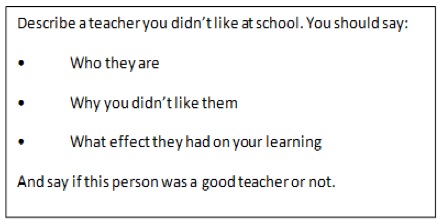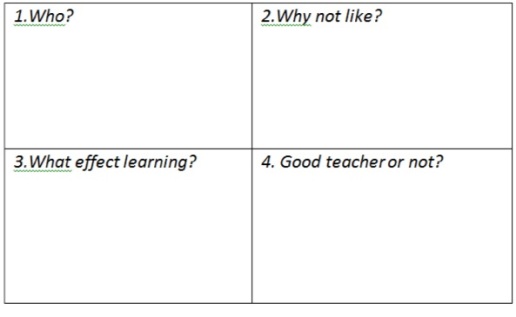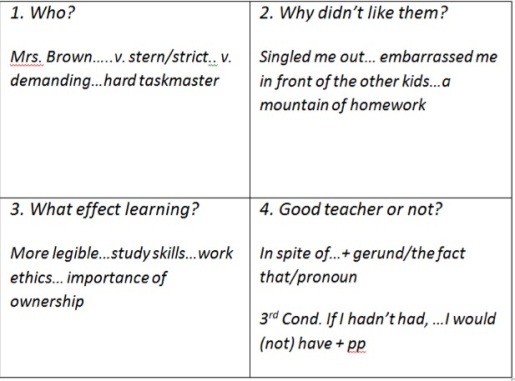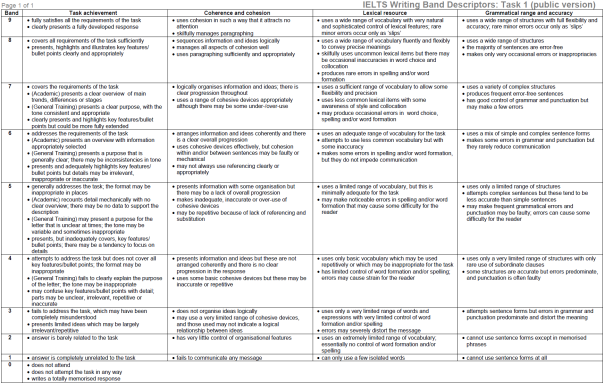In this post I’d like to look at language that is very useful for describing how something falls or rises, a very common feature of almost all types of IELTS Writing Task 1. As can be seen below, in order to get Band 6 (which is what a lot of students are aiming for), the student needs to at least ATTEMPT to use less common vocabulary.
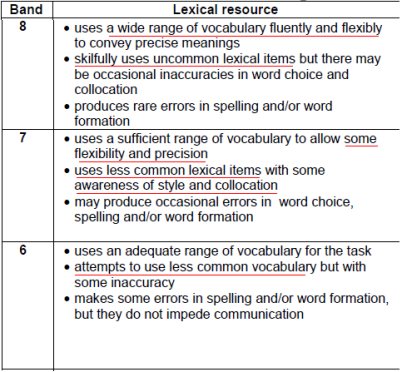
Band 7 and up requires the student to use less common lexical items and to show an awareness of collocation. As a result, it is important to show students some synonyms of verbs and nouns such as ‘rise’ and ‘fall’, as well as the respective adverbs and adjectives which collocate with them.
Write two sentences on the board (IDEA: use a model you’ve recently analysed, or one of the tasks the student has written):
- The sales grew substantially.
- There was a substantial growth in sales.
Ask students to brainstorm other words which can be used to replace the underlined ones. Then get them to brainstorm synonyms for the words in bold.
Below are two charts which show various possible synonyms for sentences 1 and 2.
While you’re looking at them, I also wanted to highlight some practical considerations:
- Point out the differences in structure
- Apart from DIP all the nouns and verbs can collocate with all the adjectives and adverbs.
- Elicit the differences in use between the prepositions BY, TO and AT (students tend to confuse them a lot)
- You might want to elicit which adjectives/adverbs mean:
- a lot
- a little bit
- quickly
- slowly
Here are the charts:
- Subject + verb + adverb
 2. There + be + +adjective + noun + IN
2. There + be + +adjective + noun + IN
Some activities:
- Transformation dictation: T (or st) says a sentence using structure #1 and the student changes it to structure #2 without changing the meaning or tense
- Substitution dictation: as above, but instead of changing the structure the student substitutes one of the words for a synonym, but keeps the meaning the same, e.g. There was a substantial rise in sales -> There was a significant rise in sales (IDEA: to make it more challenging, the student has to substitute both the adjective and the noun, or the verb and the adverb).
- Sentence extension: sales/rise/steep/last year
- Mingle and flash sentence extension: a variation on the above in which each student has a slip of paper with a sentence extension; sts mingle and show the slips to each other – the other student has to produce a correct sentence
- Mingle and flash substitution: same as above, but instead of extension, students show each other slips of paper with example sentences and their partner has to rephrase the sentence using synonyms, but keeping the meaning the same
- Error correction: these can be isolated sentences or embedded in an example Task 1. You might take them from previous writing done by students. Lots of variations possible: dictation, snap, mingle and flash, etc.
- Gap fill: take a model Task 1 response (together with the task) and delete the adj/noun and verb/adverb combinations. Students complete and check with the original to notice differences.
- Speed writing: students write minimum 4 sentences describing a given graph/chart in 3 minutes. If you’re looking for some interesting graphs, check out this post by James Taylor.
Did you find these ideas helpful? How do you teach IELTS? I’d love to hear from you in the comments section.
And don’t forget to follow the blog on the right hand side to receive the latest posts by email.


 ul. We will do checklists for task 2 at another time. Thanks for listening. Please leave your comments below.
ul. We will do checklists for task 2 at another time. Thanks for listening. Please leave your comments below.



